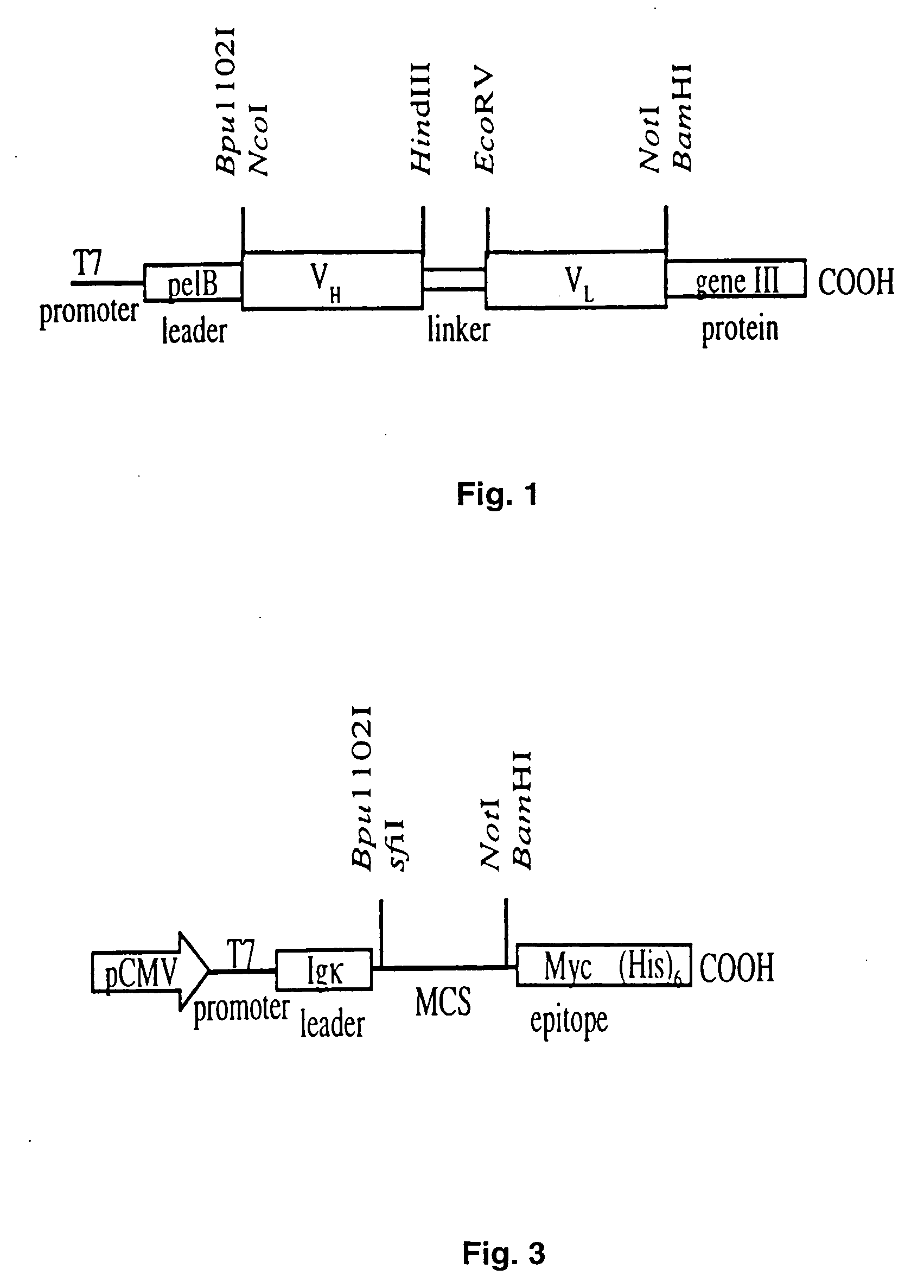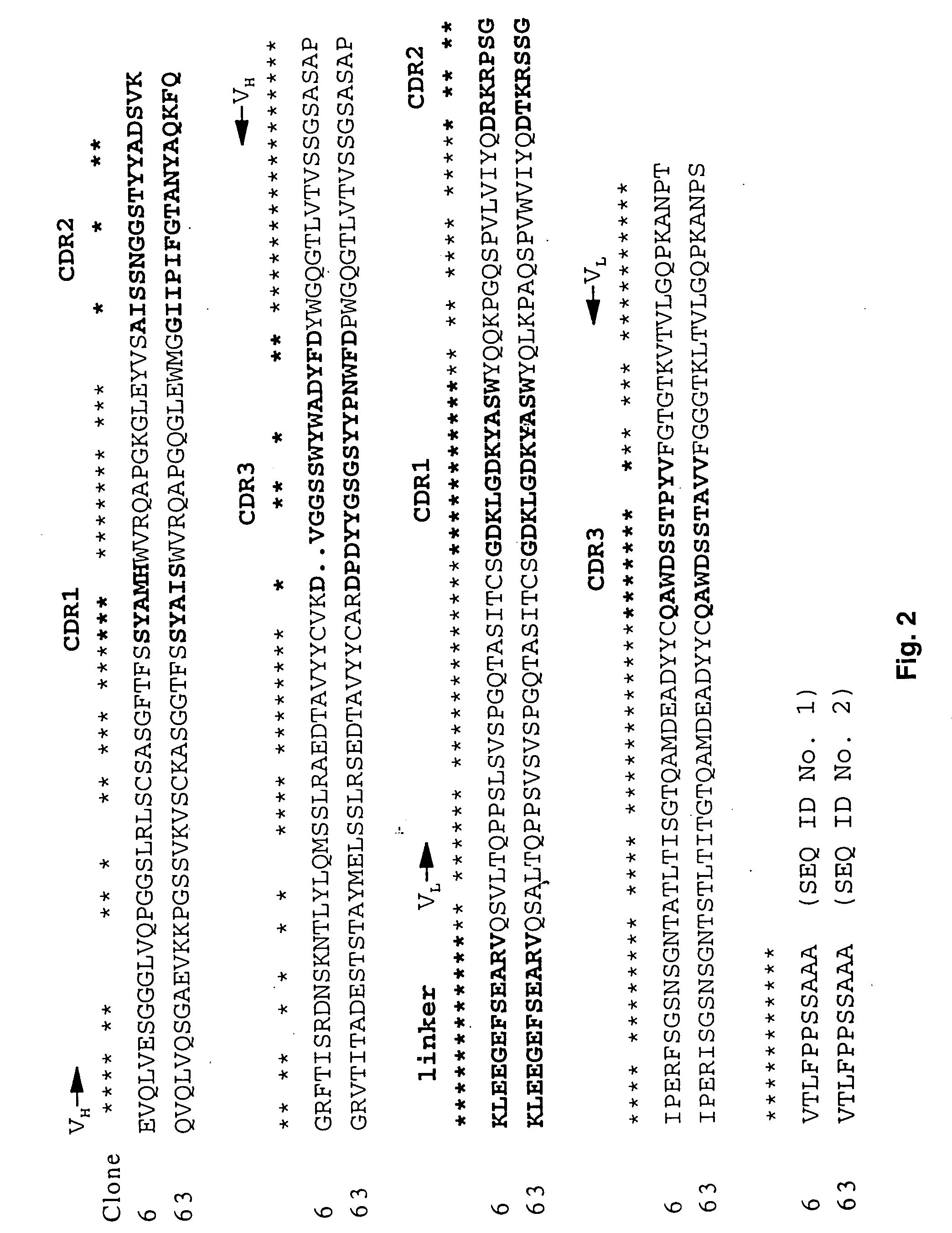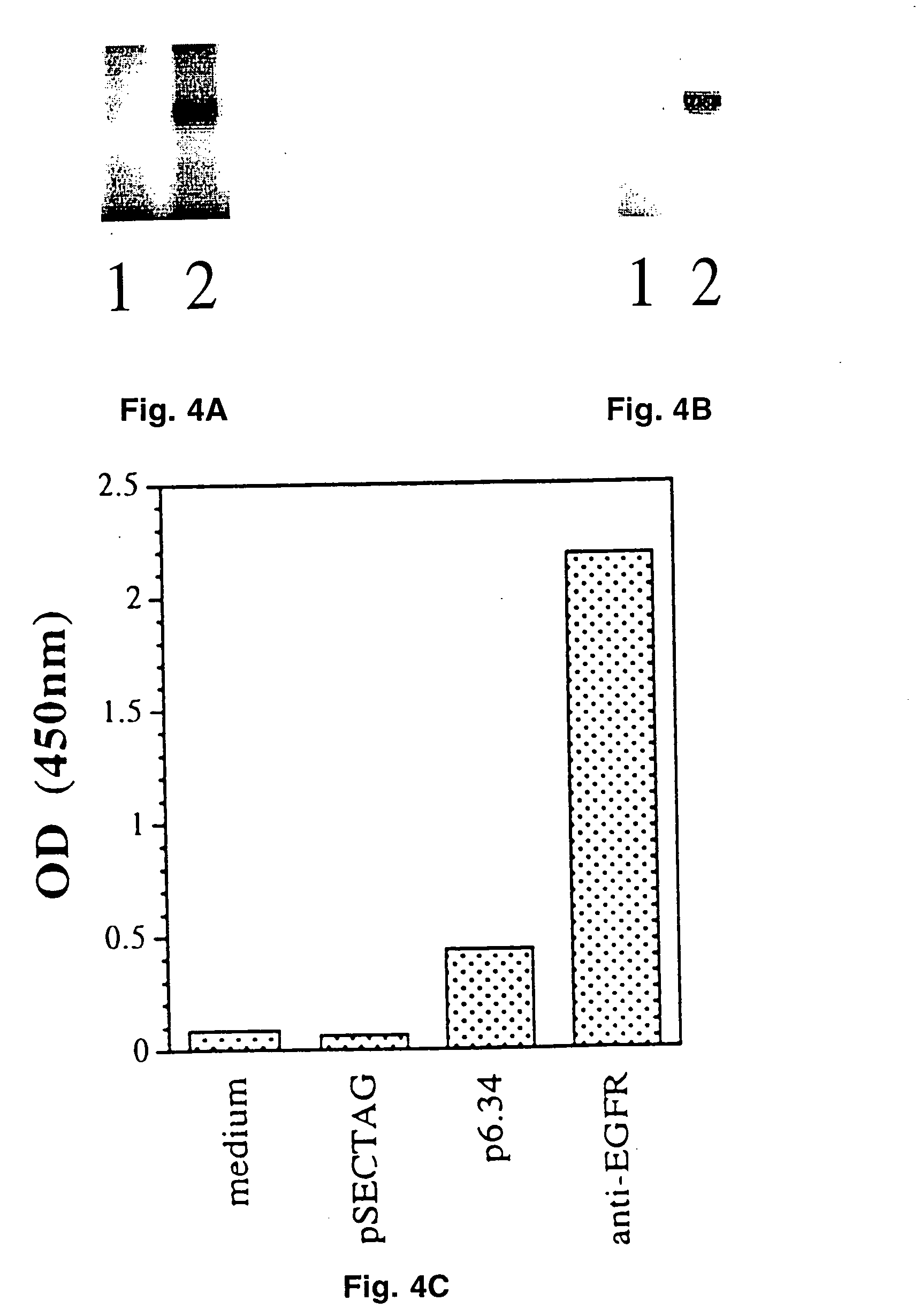Human anti-epidermal growth factor receptor single-chain antibodies
a growth factor receptor and anti-epidermal technology, applied in the field of molecular biology and monoclonal antibody technology, can solve the problems of poor prognosis of patients with tumors that overexpress the epidermal growth factor receptor, poor immunological or allergic response, and uneven distribution of monoclonal antibodies around the tumor
- Summary
- Abstract
- Description
- Claims
- Application Information
AI Technical Summary
Problems solved by technology
Method used
Image
Examples
example 1
Isolating EGFR-Specific Human Single-Chain Antibody (scFv)
[0042] In the screening of the phage library for anti-epidermal growth factor receptor scFv, an IgM scFv display library with a calculated complexity of 2×107 independent clones was constructed in pSEX81 (FIG. 1) as described (15) using peripheral leukocyte cDNA prepared from healthy donors. The IgM phage display library was screened for expression of scFvs which specifically bind the EGF receptor (EGFR). The phage library was suspended in 500 ml 2× YT-GA medium (17 g Tryptone, 10 g yeast extract, 100 mM glucose, 100 μg / ml ampicillin and H2O to 1 liter) to an initial OD600 of 0.025. The cells were grown with shaking (240 rpm) at 37° C. until an OD600 of 0.1 at which point the cells were superinfected with helper phage, M13K07 (Amersham Pharmacia Biotech), at an MOI of 20. After the addition of helper phage, the cells were mixed gently and left undisturbed for 15 min at 37° C. followed by shaking (240 rpm) for 45 min. The me...
example 2
Sequencing and Analysis of scFv Clones
[0051] After 3 rounds of phage panning, individual clones were identified by ELISA as described above. Plasmid DNA was isolated and sequenced according to standard manufacturer's protocol for the ABI DNA sequencer (UAB Automated DNA Sequencing Core Facility). Plasmid DNA was sequenced both directions initially using pelB and gene III primers. Internal sequencing primers were determined from the initial sequence data and synthesized by Operon (Alameda, Calif.). After completion of the scFv sequence, the data was analyzed using SeqWeb software (Genetics Computer Group, Madison, Wis.) for alignment of complementary-determining regions (CDRs) with known variable-chain sequence data.
[0052] Two clones, pSEX81-6 and pSEX81-63, have been sequenced and their putative amino acid sequences are shown in FIG. 2. The clones are in the order, variable heavy chain (VH)-linker-variable light chain (VL), with both clones containing a lambda VL chain.
[0053] Wh...
example3
Targeting the scFv to a Cellular Compartment and Expression of Secretory scFv
[0054] In eukaryotic cells, scFvs can be targeted to specific subcellular compartments by engineering the nucleotide sequence to express a protein with the appropriate signal sequences. In this way the scFvs can be modified to be directed to a subcellular compartment where the antibody might prove to be most effective. Recently, Lotti et al. showed that the C-terminal sequence KKXX from the adenovirus E19 protein would enhance the localization of the protein to the cis-golgi complex with some retention in the ER (18). To direct the scFv to the cytoplasm, the hydrophobic amino acid core of the immunoglobulin secretory signal sequence was removed (19). The addition of a nuclear localization signal from the large T-antigen of SV40 virus, PKKKRKV (SEQ ID No. 3), to the N-terminal end can target the scFv to the nucleus (20).
[0055] To target mitochondria, the N-terminal presequence of the subunit VIII of human...
PUM
| Property | Measurement | Unit |
|---|---|---|
| temperature | aaaaa | aaaaa |
| temperature | aaaaa | aaaaa |
| concentration | aaaaa | aaaaa |
Abstract
Description
Claims
Application Information
 Login to View More
Login to View More - R&D
- Intellectual Property
- Life Sciences
- Materials
- Tech Scout
- Unparalleled Data Quality
- Higher Quality Content
- 60% Fewer Hallucinations
Browse by: Latest US Patents, China's latest patents, Technical Efficacy Thesaurus, Application Domain, Technology Topic, Popular Technical Reports.
© 2025 PatSnap. All rights reserved.Legal|Privacy policy|Modern Slavery Act Transparency Statement|Sitemap|About US| Contact US: help@patsnap.com



